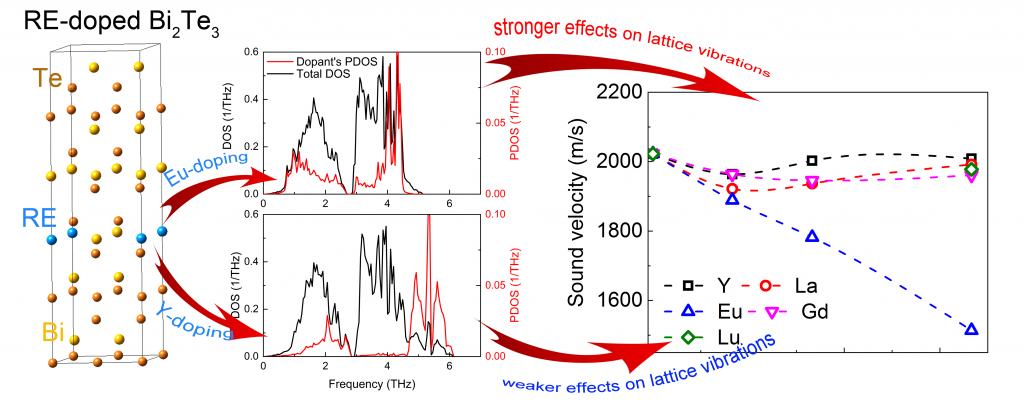
The density functional theory is a powerful tool for thermal conductivity evaluation. This procedure requires consideration of both Grüneisen parameter and sound velocity. Doping of bismuth telluride with rare earth elements reduce thermal conductivity. Impurity phonon modes appear at frequencies up to 2 THz. The divalent impurities exhibit stronger effects compared to trivalent ones. A. Baranovskiy et al., Advanced Theory and Simulations 1 (12), 1800162 (2019).

Oxide thermoelectric materials are promising for waste heat recovery at elevated temperatures. Motivated by the continuing efforts seeking for high-efficiency n-type oxides, we study Nb-doped n-type CaMnO3 (m = ∞) and Ca2MnO4 (m = 1), which are derivatives of the Ruddlesden-Popper CaO(CaMnO3)m-series featuring extremely opposite transport coefficients. We synthesize composite materials based on these two phases to correlate between the thermoelectric properties, microstructure evolution, and composition of the material, and determine the optimum sintering temperature. Then, we measure both thermal and electronic transport coefficients, and perform a thorough general effective medium (GEM) analysis. Interestingly, we find that most ratios obey to the GEM behavior, where deviations are elucidated in terms of interfacial effects. This study provides us with tools for identifying the significance of bulk vs. interfacial effects in design of composite materials with controllable transport properties. A. Azulay et al. Acta Mater. 164 481-492 (2019)
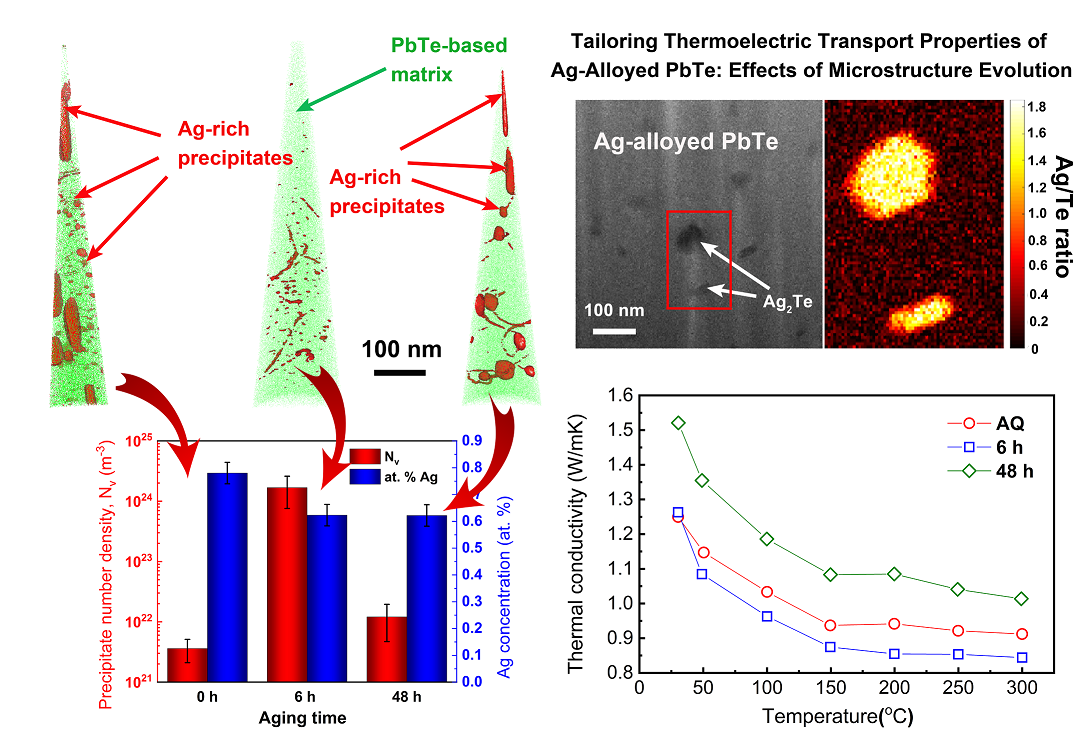
Complementary scanning transmission electron microscopy (S/TEM) and atom probe tomography (APT) analysis reveal nanometer-size Ag-rich precipitates in PbTe-based thermoelectric matrix of high number density. The thermal and electrical conductivities, as well as the Seebeck coefficients, are found to be highly sensitive to the microstructure and its temporal evolution, e.g., the number density of Ag-rich precipitates increases by ca. 3 orders of magnitude and reaches (1.68 ± 0.92) × 1024 m−3 upon aging at 380 °C for 6 h, which is pronounced by reduction in thermal conductivity to a value as low as 0.85 W m−1 K−1 at 300 °C. This guides predictive tools for further design of materials for energy harvesting. A. Sheskin et al. ACS Appl. Mater. Inter., 10 (45) 38994-39001 (2018)
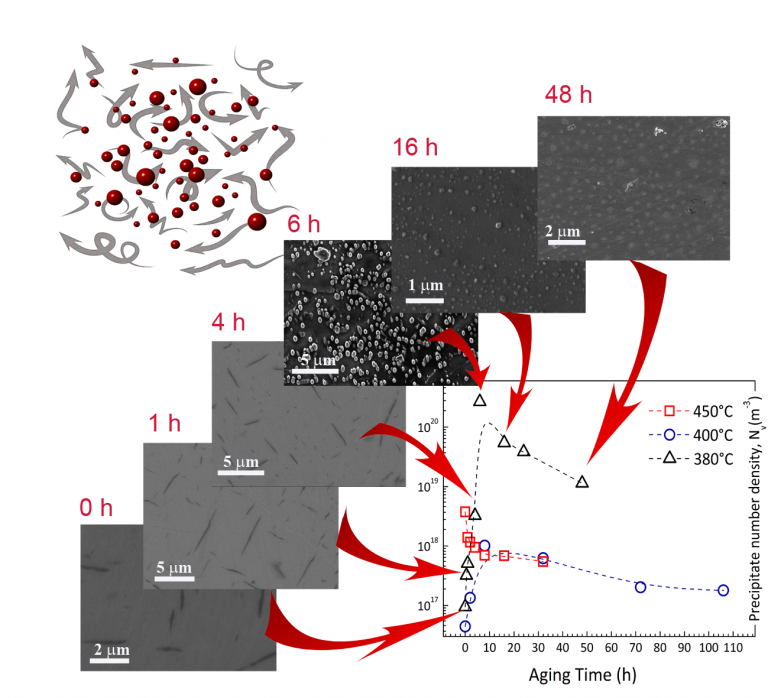
A commonly used approach to enhance thermoelectric efficiency adapted from physical metallurgy is formation of highly-dispersed precipitates in the matrix for phonon scattering. Selection of the appropriate alloy composition, as well as heat treatment temperature and duration, enables delicate control of the microstructure evolution kinetics, thereby achieving minimum lattice thermal conductivity. More details: Y. Amouyal et al., Progress Report: Physical Metallurgy Inspired Nano-Features for Enhancement of Thermoelectric Conversion Efficiency, Advanced Theory and Simulations July 2018, 1800072.https://doi.org/10.1002/adts.201800072
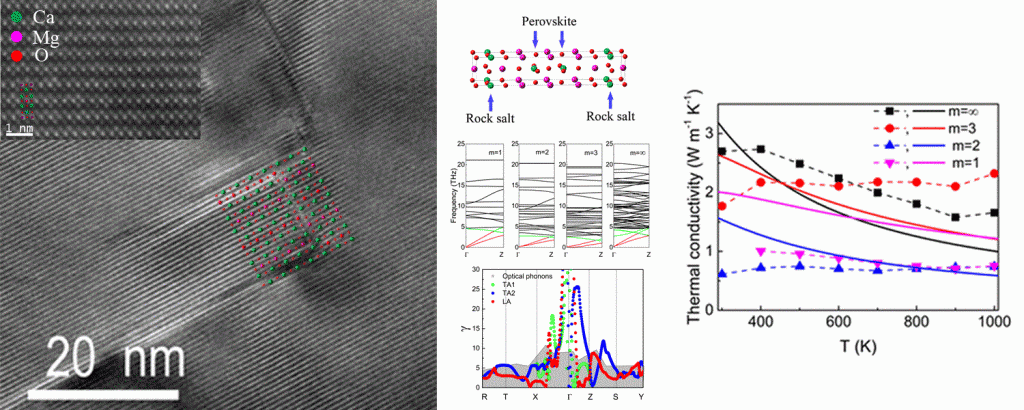

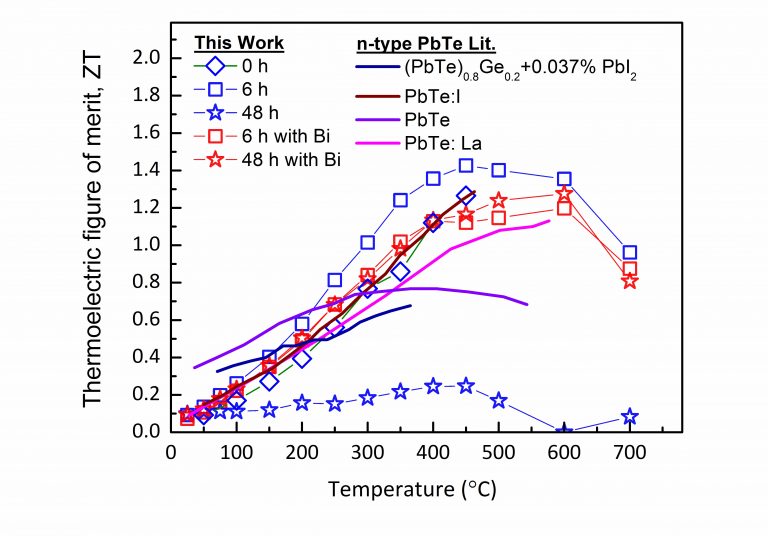
Significant enhancement of ZT for n-type PbTe-based compound due to controlled nucleation and growth of Ag-rich precipitates.
T. Grossfeld, A. Sheskin, Y. Gelbstein, and Y. Amouyal, Crystals 7 (9), 281 (2017) http://www.mdpi.com/2073-4352/7/9/281
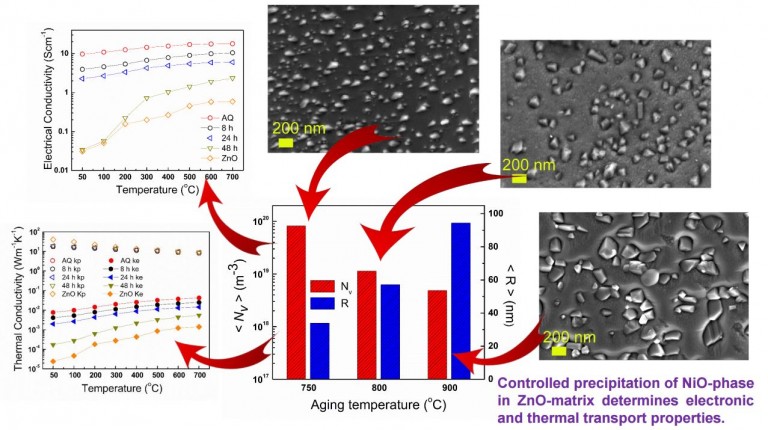
Effects of precipitation on the thermal conductivity of nickel-doped zinc oxide for thermoelectric applications. I. Koresh and Y. Amouyal, J. Eur. Ceram. Soc. 37 (11), 3541-3550 (2017)
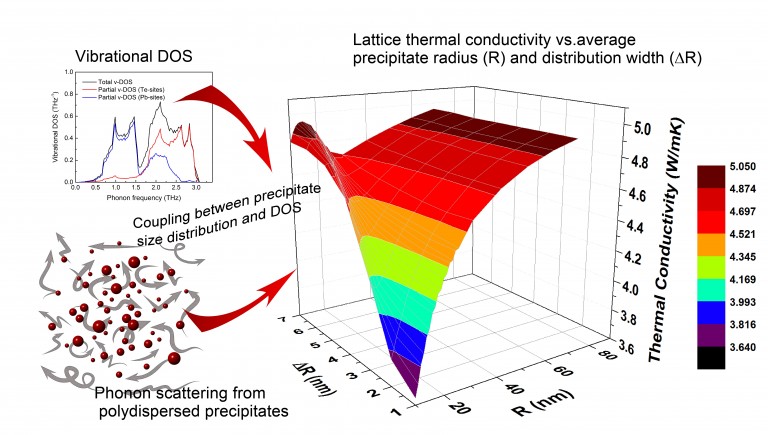
A Practical Approach to Evaluate Lattice Thermal Conductivity in Two-Phase Thermoelectric Alloys for Energy Applications. Y. Amouyal, Materials 10 (4), 386 (2017).

Role of nanostructuring and microstructuring in silver antimony telluride compounds for thermoelectric applications. O. Cojocaru-Mirédin, L. Abdellaoui, M. Nagli, S. Zhang, Y. Yu, C. Scheu, D. Raabe, M. Wuttig, and Y. Amouyal, ACS Applied Materials & Interfaces 9, 14779-14790 (2017).
The longitudinal acoustic
Optical
The longitudinal acoustic (top) and optical (second) modes of lattice vibrations in cubic Pm-3m CaMnO3, simulated from density functional theory (DFT) calculations. The Ca, Mn, and O atoms are indicated by blue, aqua, and red spheres, respectively. It is observed that Ca-atoms mainly contribute to the acoustic modes, whereas the optical ones are dominated by oxygen.
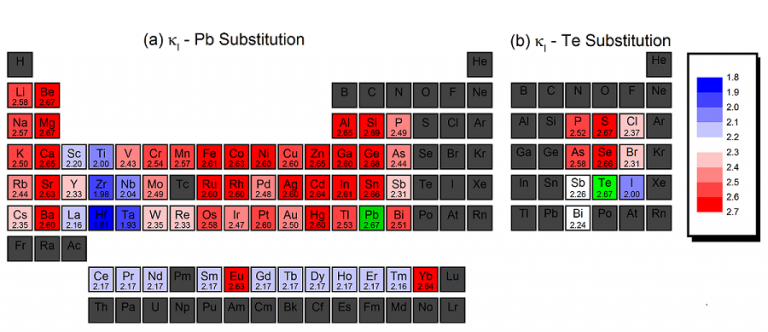
A color-coded periodic table representing the lattice thermal conductivity calculated for 1.6 at. % X-doping at 700K for (a) Pb-site substitutions, XPb31Te32 and (b) Te-site substitutions, XPb32Te31. The values in the diagram are expressed in Wm-1K-1 , and are calculated based on an average phonon relaxation time of 10-11 s. E. Joseph and Y. Amouyal, J. Appl. Phys. 117 (17), 175102 (2015).
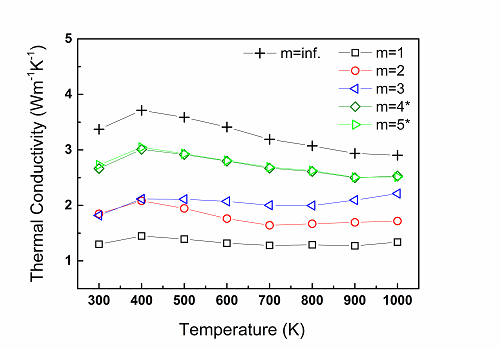
The temperature-dependent thermal conductivity measured for the Nb-doped compounds of different periodicities, having the structural form (CaMnO3)mCaO ,using the laser flash analysis (LFA) technique: m=∞ (plus markers), m=1 (black), m=2 (red), m=3 (blue), m=4* (dark green), and m=5* (light green). A. Graff and Y. Amouyal, Appl. Phys. Lett. 105(18), 181906 (2014).

The calculated temperature dependent (a) lattice thermal conductivity based on the calculated sound velocity, and (b) total lattice thermal conductivity for La-doped PbTe of different concentrations. E. Joseph and Y. Amouyal, J. Elect. Mater. 44 (6), 1460 (2015).

The sound velocity averaged over the different modes calculated for a La-doped PbTe lattice, as a function of the doping level. A significant decrease of the sound velocity with increasing doping level is observed. E. Joseph and Y. Amouyal, J. Elect. Mater. 44 (6), 1460 (2015).

Temperature-dependent thermal conductivity, as measured by use of the LFA method, for a ternary alloy AgSbTe2-based alloy (AST, squares) and a quaternary, La-doped, alloy (La-doped AST, circles). A notable difference between the thermal conductivity values is apparent along a wide temperature range Y. Amouyal, J. Elect. Mater. 43 (10), 3772 (2014).
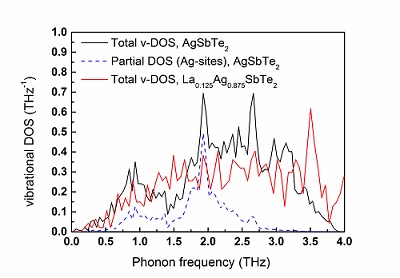
The vibrational density of states (v-DOS) calculated, from first-principles, for the AgSbTe2 phase. The total v-DOS appears in black and the partial v-DOS associated with the Ag-sublattice vibrations is represented by the blue dashed curve. The noticeable overlap at approximately 2 THz implies that the primary vibrational peak in the AgSbTe2 v-DOS curve originates from the Ag sublattice. Attenuation of the v-DOS as a result of La-doping is observed for a La0.125Ag0.875SbTe2 lattice, denoted by the red line. Y. Amouyal, J. Elect. Mater. 43 (10), 3772 (2014).
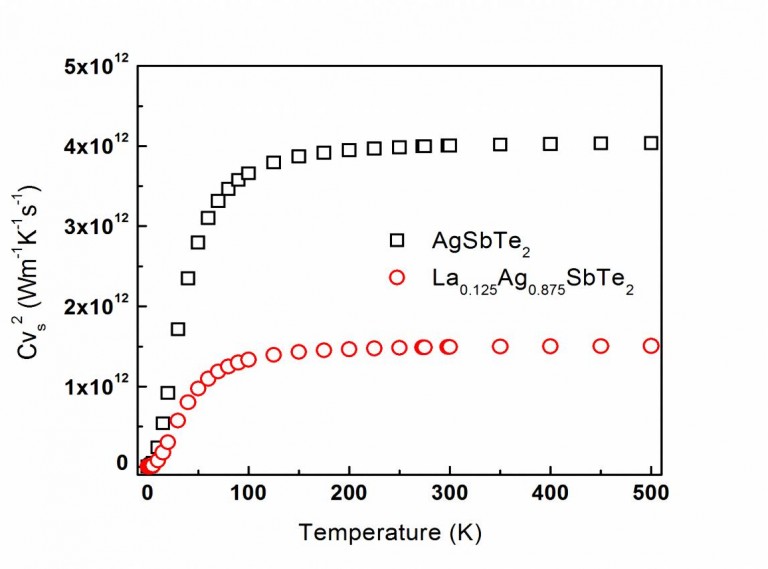
The temperature-dependence of the Cv·vs2-products (Cv: heat capacity; vs: sound velocity) calculated for the AgSbTe2– and La0.125Ag0.875SbTe2-compounds from first-principles, marked with empty squares and circles, respectively. This product is a significant factor determining thermal conductivity; the marked difference between both plots evidently indicates the effects of La-doping on lowering thermal conductivity. Y. Amouyal, Computational Materials Science 78 (2013) 98.
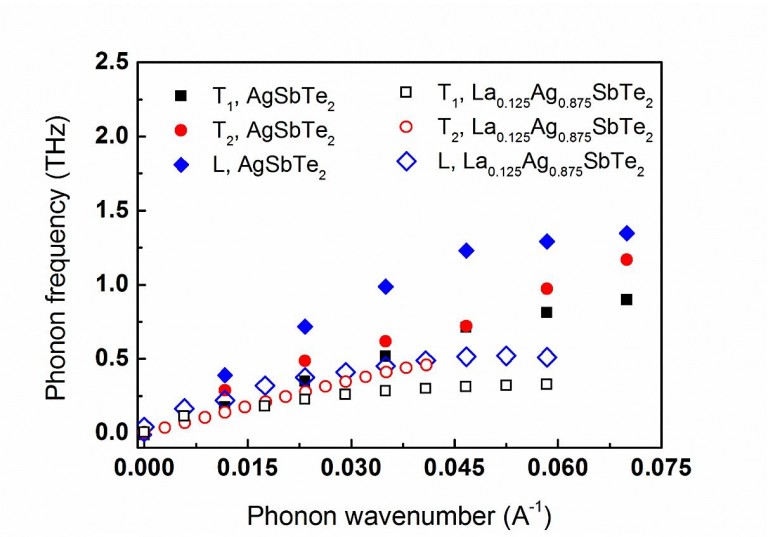
The dispersion ω(k) – curves of the acoustic phonons calculated for both AgSbTe2 – and La0.125Ag0.875SbTe2– compounds close to the Γ-point. It is indicated that the slopes of the one longitudinal (filled diamonds) and two transverse (filled circles and squares) acoustic modes of the AgSbTe2-lattice are greater than those of the La0.125Ag0.875SbTe2-lattice (empty diamonds, circles and squares, respectively). Y. Amouyal, Computational Materials Science 78 (2013) 98.
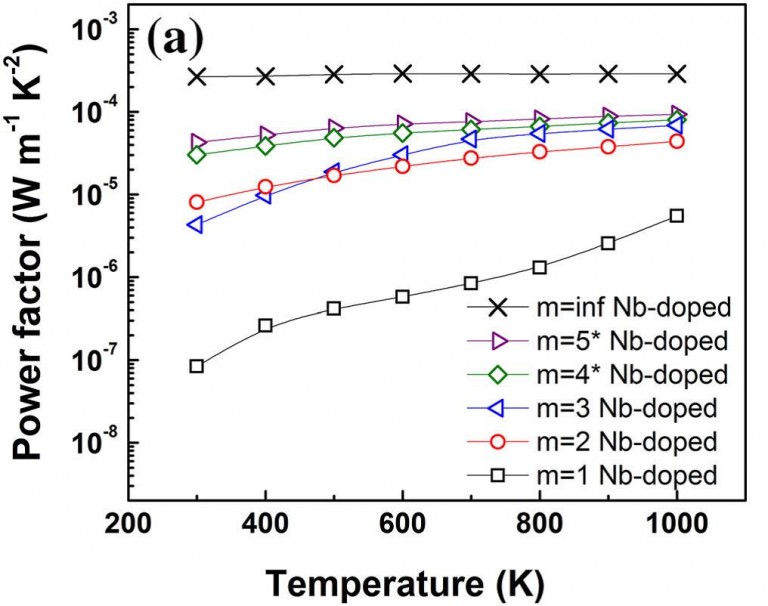
Temperature-dependent power factor (PF) values calculated for Nb-doped CaO(CaMnO3)m compounds with different periodicities of m = ∞ (inf., cross markers), m = 1 (black squares), m = 2 (red circles), m = 3 (blue left-triangles), m = 4* (green diamonds), and m = 5* (purple right-triangles). A. Graff & Y. Amouyal J. Electron. Mater. 45 (3), 1508 (2016).
The longitudinal acoustic
Optical
La0.125Ag0.875SbTe2
AgSbTe2
The longitudinal acoustic modes of lattice vibrations in pure and lanthanum-doped 2x2x2 AgSbTe2-based supercells, simulated from density functional theory (DFT) calculations. The La, Ag, Sb, and Te atoms are indicated by aqua, gray, yellow, and orange spheres, respectively. It is observed that La-substitution defects suppress lattice vibrations, thereby reducing lattice thermal conductivity. Y. Amouyal, Computational Materials Science 78 (2013) 98.
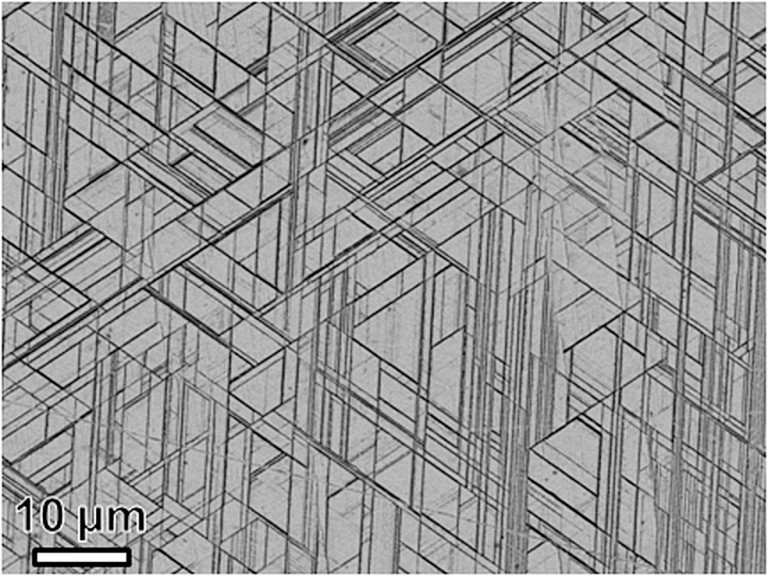
A high-resolution scanning electron microscope (SEM) micrograph of oriented Sb2Te3-precipitates in an Ag-Sb-Te-based matrix aged at 400 °C for 0.5 h.
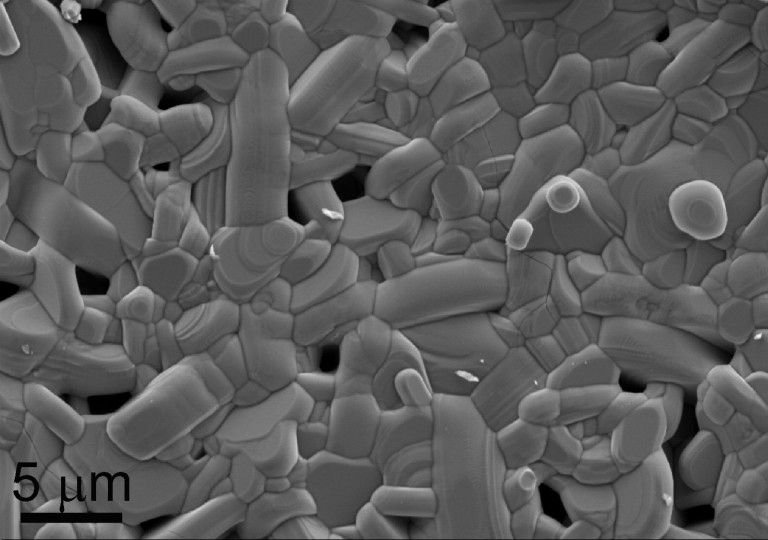
A high-resolution scanning electron microscope (SEM) micrograph of a 4 at% Nb -doped CaMnO3-based Ruddlesden-Popper compound produced by solid state reaction of powders and sintering at 1400 °C. A. Graff and Y. Amouyal, Applied Physics Letters 105 (18), 181906 (2014).


